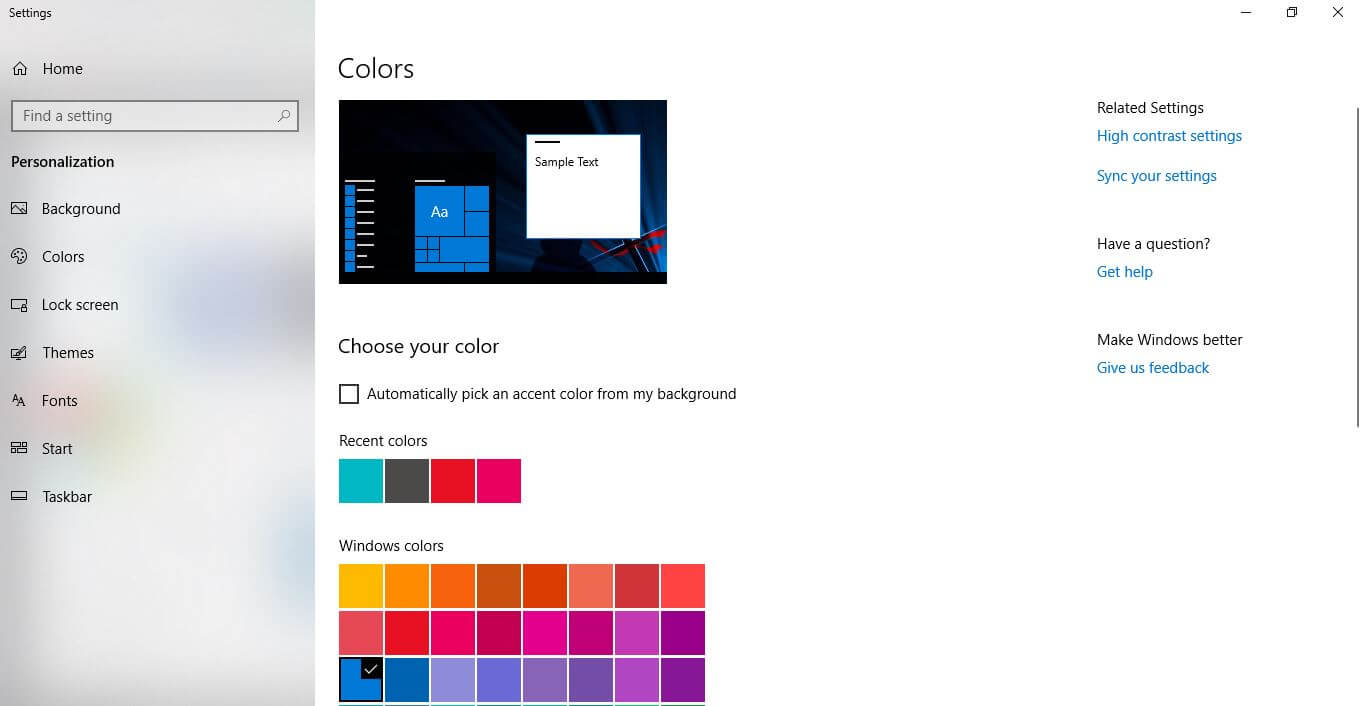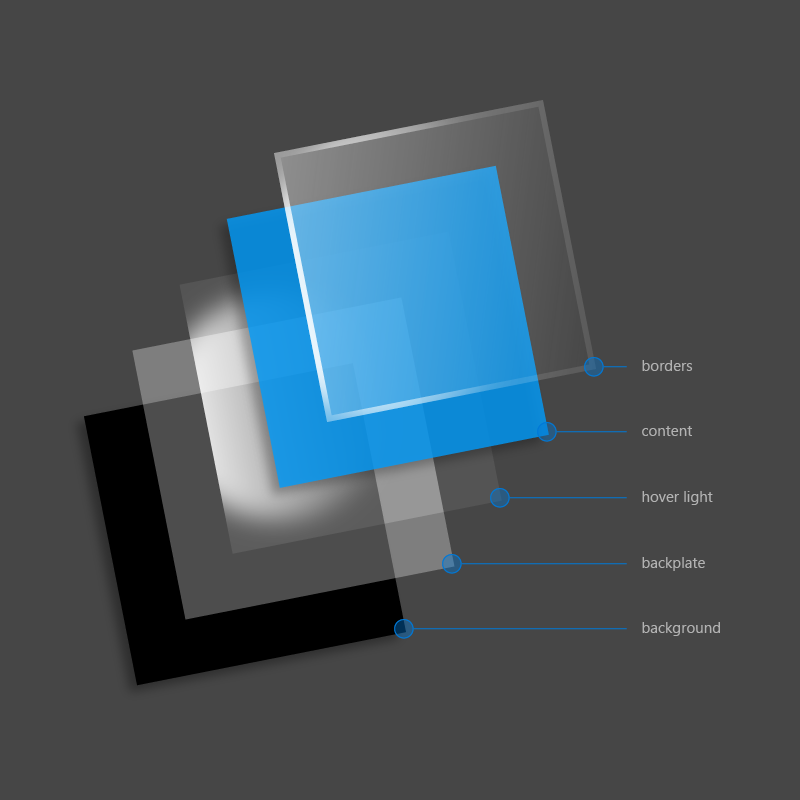How to change the color of the taskbar in Windows 10? How to change the color of window borders in Windows 10? How to change the color of the start menu in Windows 10? Open the Settings Charm with the shortcut Windows Key + I; 2. Click on the Personalization. Click on the Color. Choose your color and click on Save changes. Feb 8, 2018 - To change the color of your Start menu, Start screen, taskbar and window borders, go to Settings Personalization Colors Show color on.
2:13Are you unimpressed with the Windows 10 Start menu? If you have yet to embrace its colorful tiles and menus, then you are missing out, especially if you have a Windows tablet or touchscreen laptop. With a bit of customization, you can form the Start menu into something useful.Quickly, let's break down how the Start menu is organized.
It's divided into three sections. The narrow panel on the left features icons for important menu items that vary depending on your settings (more on this later), including your account, settings, and power options. These icons are unlabeled by default, but if you need help figuring out which is which, you can tap or click the menu button at the top of this section (looks like three horizontal lines) to reveal labels for each icon. The center (but still mostly left) panel houses a list of all your applications, starting with those you recently added at the top and then an alphabetical. The large panel on the right contains the colorful tiles in sections labeled as Create, Play, Explore and so on.Now that you know the lay of the Start menu land, let's get to the ways in which you can customize it. Customize the far-left panelThe far-left panel of the Start menu can have a minimum of two icons (your account icon and the power options icon) and a maximum of 12 icons.
You can customize the icons that appear by opening the Settings menu and going to Personalization Start Choose which folders appear on Start. Here, you can toggle on/off the following icons: File Explorer, Settings, Documents, Downloads, Music, Pictures, Videos, HomeGroup, Network and Personal folder. Screenshot by Matt Elliott/CNETFull-screen Start or notThe full-screen Start menu is the default menu if you're using a tablet, while the partial-screen Start menu is the default if you have a desktop or laptop.

If you want the full-screen experience on a PC, go to Settings Personalization Start and toggle on Use Start full screen. And on a tablet, you can go to Settings System Tablet mode and choose which mode - desktop or tablet - you want your device to start in. Change the colorTo change the color of your Start menu, Start screen, taskbar and window borders, go to Settings Personalization Colors Show color on Start, taskbar, and action center. Turn this option on and pick the accent color you'd like to use from the options above.
If you'd like your Start menu to be transparent-ish, you can also turn on Make start, taskbar, and action center transparent. Screenshot by Matt Elliott/CNETPin and unpin tilesTo pin an app to the right panel of the Start menu as a tile, find the app in the center-left panel of the Start menu and right-click it. Click Pin to Start, or drag and drop it into the tile section of the Start menu. To unpin a tile, right-click the tile and click Unpin from Start.
Move and resize tilesTo resize a tile, right-click on it and use Resize option to pick a size. Depending on the tile/app, you will be able to choose small, medium, wide or large. Most tiles will only be able to be sized to small or medium, but native Windows apps such as Edge or Maps will be able to be sized to wide or large.
To move a tile, click or tap it, hold it, and drag it to another part of the Start menu. Screenshot by Matt Elliott/CNETGo wideIf your Start menu is starting to feel crowded, you can make it wider by going to Settings Personalization Start and toggling on Show more tiles. Create Start menu foldersEven with an extra-wide Start menu, it can start to feel cluttered if you have added a bunch of tiles to it. As with the thumbnails littering your desktop, you can organize Start menu tiles into folders. Just drag on tile on top of another tile to create a folder of like-minded tiles. It'll feel very familiar to iPhone owners who pride themselves on their neat and orderly collection of app folders, though there's no jiggling involved. Edit the tile sectionsIn Windows 10 (like Windows 8/8.1), you can divide your live tiles into different categories.

Change Color Of Taskbar Windows 10 Full Screen
To create a new category, click a tile, hold it and drag it to the bottom of the Start menu until a solid bar shows up. Drop the tile below this bar, and your tile will end up in its own little section, which you can name.Editors' note: This How To post was originally published on January 26, 2015 and has since been updated to include new information.
RECOMMENDED:With default settings, Windows 10 uses black color for Start menu, taskbar and action center. While the default black color looks nice and goes well with the, after using Windows 10 for a while, you might want to change your taskbar color to your desired color.Microsoft has included a number of settings to customize taskbar. Lagu terbaik bryan adam mp3.
You can make Start menu and, add or, and configure taskbar to use the color of desktop background or set your own custom color.So in Windows 10, if you’re bored with the default black color of taskbar, you can set a color of your choice or configure the taskbar to use a color to match the wallpaper. The only catch, however, is that you can’t set different colors for taskbar, action center and Start menu in Windows 10, and moreover, the color of taskbar and Start menu will be the accent color and vice versa. For the uninitiated, the accent color is nothing but a color used in Settings app, some tiles on Start, and some other areas of Windows 10. The accent color is also the window border color.To change the taskbar color in Windows 10, follow the instructions mentioned in one of the two given below methods.Method 1 of 2 Change the taskbar color via SettingsStep 1: Right-click on desktop and then click Personalize option to Personalization section of Settings app.Step 2: In the left-pane, click Colors to see various settings on the right.Step 3: On the right-side, turn on the option labelled Show color on Start, taskbar, and action center. Make sure that the first option labelled Automatically pick an accent color from my background is turned off.Step 4: Now, under Choose your accent color, click on a tile to select and set it as the color for your taskbar, Start menu and action center.Method 2 of 2 Change the taskbar color to match desktop backgroundStep 1: Open Personalization section of Settings app. To do so, right-click on desktop and then click Personalize.Step 2: On the left-side, click Colors.Step 3: Now, on the right-side, turn on the following options:# Automatically pick an accent color from my background# Show color on Start, taskbar, and action center.That’s it! From here onwards, whenever you change the desktop background and the color of taskbar and Start menu will also be changed automatically.Note: As of now, there is no software around to set different colors for Start menu and taskbar in Windows 10.
We will update this article if and when a developer comes with a software to set separate colors for taskbar and Start menu in Windows 10.Let us know if you are unable to change your default taskbar color in Windows 10. I don’t like these dark bright colors. I would prefer and it would be easier to read if it was like it was awhile back with the lighter pastel shades. This pink is too hot pink. I would prefer a baby pink. But I don’t see that color on these selections here. When you are blind in one eye and can’t see out of the other (LOL) the colors, fonts and such really make a difference.

And, especially for people like me who have had eye surgery for cataracts. Please get the softer lighter pastel shades back.Arda says. I have to say this new Windows 10 look is a disaster.
I mean, it was so neat in Windows 7. And so it was in Windows 8. But this is one is a total failure.
The fact, that you cannot customize this look and you are limited to a certain amount of colors that any way you can’t brighten up I mean, the taskbar is always dark. But nothing can be done to make it pretty light metallish, for example. Not, it’s dark and it has these primitive looking icons in white. I’m hoping an app will pop up soon enough to be able to modify it.Aisha says.